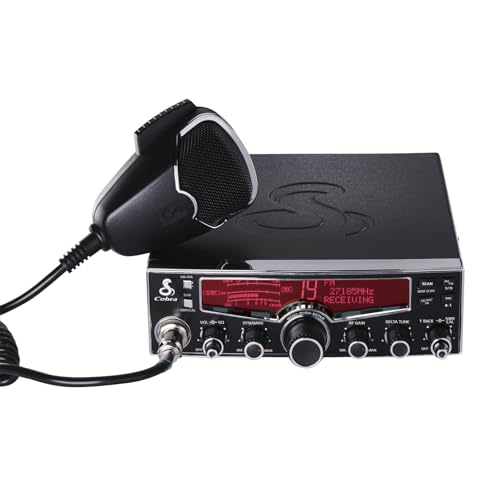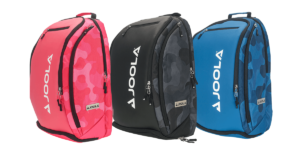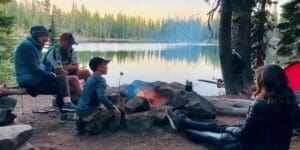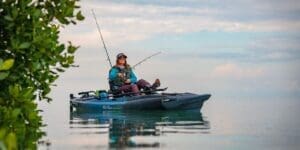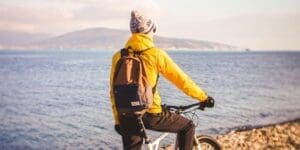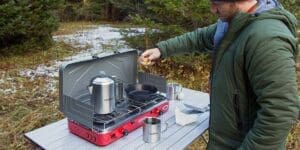Are you aware of the key safety precautions that can make or break your camping experience? Ensuring your well-being in the great outdoors demands attention to detail and adherence to established safety protocols. From securing your campsite to handling fire hazards and waste disposal, every decision impacts your safety and that of others around you. Stay tuned for valuable insights and practical tips on navigating the wilderness responsibly, enhancing your outdoor adventures, and fostering a sense of harmony with nature.
Key Takeaways
- Choose leveled, high ground for safety and avoid flood-prone areas.
- Pitch tent on flat ground, head uphill while sleeping, and follow setup instructions.
- Maintain fire safety by keeping a safe distance from the tent and following guidelines.
- Properly dispose of trash, keep the campsite clean, and prevent attracting wildlife.
Campsite Location Selection
When selecting a campsite, prioritize safety by considering potential risks and opting for a leveled, high location to prevent flooding or rolling hazards. Conduct a terrain assessment to appreciate the landscape and choose a spot away from signs of past flooding or animal activity. Show wildlife awareness and preserve the ecosystem by avoiding delicate areas. Understanding the weather forecasts and tree species can aid in proper planning. By selecting a site with these factors in mind, you ensure a safer and more enjoyable camping experience. Remember, your campsite location sets the foundation for the rest of your outdoor adventure, so take the time to choose wisely and respect the environment around you.
Tent Pitching and Setup
For efficient tent pitching and setup, find a large, flat spot to set up your shelter. This ensures stability and comfort during your outdoor stay. To enhance your camping experience further, consider the following tips:
- Tent maintenance tips: Regularly check for tears, loose seams, and waterproofing to keep your tent in top condition.
- Sleeping comfort suggestions: Place a sleeping pad or air mattress under your sleeping bag for insulation and cushioning.
- Organized setup: Arrange your gear strategically inside the tent to maximize space and prevent clutter.
Fire Safety and Setup
To maintain a safe camping environment, ensure proper fire safety and setup protocols are followed at all times. When constructing a fire pit, focus on safety by choosing a spot away from tents and low-hanging branches. Dig a pit and surround it with rocks to contain embers and prevent the fire from spreading. Remember to keep a safe distance between the fire and your tent to avoid accidents. When extinguishing embers, use water to douse the fire completely, stirring the ashes to ensure they are out. Take precautions by waiting for the ashes to cool before disposing of them properly. Following these fire safety measures will enhance your camping experience and keep you and your surroundings safe.
Toilet Location and Setup
Consider the designated toilet location and setup for optimal campsite hygiene and waste management. When it comes to toilet facilities, proper waste disposal and hygiene practices are crucial for maintaining a clean and safe camping environment. Ensure you follow these essential guidelines:
- Locate toilets in established campgrounds within walking distance for convenience.
- Bring hand wash, sanitizer, and toilet paper to uphold hygiene standards.
- Choose a toilet area at least 200 feet away from the tent in the wild to prevent contamination.
Trash Management and Disposal
Properly dispose of all rubbish generated during camping to maintain a clean and safe campsite environment. Implement waste segregation techniques to separate recyclables from general waste. This practice minimizes environmental impact and promotes eco-friendly disposal methods. Always carry a designated trash bag and hang it at least 12 feet high in bear-prone areas to prevent wildlife interaction. Keep trash bins at least 200 feet away from the campsite to avoid attracting animals. Follow guidelines for proper waste disposal to ensure a tidy camping area. By managing trash effectively, you contribute to preserving the natural surroundings and safeguarding both your safety and the wildlife in the area.
Weather Preparedness Tips
Prepare for changing weather conditions by checking forecasts regularly and packing appropriate gear for your camping trip. Weather monitoring is crucial for staying ahead of sudden shifts. Always carry emergency supplies like extra clothing, a waterproof tarp, and a reliable source of light. Being prepared can make a significant difference in your camping experience. Stay updated on weather alerts and adapt your plans accordingly. Having the right gear can keep you safe and comfortable in various conditions. Remember, being proactive in weather preparedness ensures you are ready for any situation that may arise during your outdoor adventure.
Emergency Response Planning
Ensure your readiness for emergencies by creating a detailed response plan that includes clear protocols and designated roles for all campers. It is crucial to have individuals trained in first aid and CPR. Additionally, having communication devices like walkie-talkies or satellite phones can be lifesaving. Below is a table outlining key elements to consider in your emergency response plan:
| Category | Key Elements |
|---|---|
| First Aid Training | Identify campers with medical training. |
| Area Designation | Establish a designated first aid area. |
| Communication | Assign roles for communication. |
| Devices | Ensure all campers know how to use communication devices. |
Final Thoughts
Now that you have learned about essential campsite safety measures, you are well-equipped to enjoy your outdoor adventures with confidence. By following these proactive guidelines, you can minimize risks, protect the environment, and enhance your overall camping experience. Remember to always prioritize safety, be mindful of your surroundings, and have a plan in place for emergencies. With these tips in mind, you can make the most of your time in the great outdoors. Happy camping!
Questions & Answers

Q: How Can Campers Prevent Insect Bites and Stings While Camping in the Wilderness?
To prevent insect bites and stings while camping in the wilderness, use insect repellent and wear protective clothing. Follow campfire safety guidelines and know emergency procedures. Stay vigilant and avoid attracting insects by keeping a clean campsite. Always be prepared and seek medical assistance if needed. Enjoy your camping experience by staying safe and protected from insect-related risks.
Q: Are There Any Specific Safety Measures to Take When Camping Near a Body of Water, Such as a Lake or River?
When camping near a body of water, like a lake or river, water safety is crucial. Always be mindful of currents, depth, and potential hazards. Have emergency procedures in place, such as knowing how to swim and using life jackets. Stay vigilant and supervise children closely. In case of emergencies, have a plan for quick response and seek help immediately. Enjoy the water responsibly and prioritize safety at all times.
Q: What Should Campers Do in Case of Encountering a Wild Animal at the Campsite?
If you encounter a wild animal at the campsite, remember these survival tips for wildlife encounters. Stay calm and avoid sudden movements. Slowly back away while making yourself appear larger. Do not turn your back on the animal. If the animal approaches, make loud noises and throw objects. Always have a plan for animal safety and know the emergency procedures in case of an encounter.
Q: How Can Campers Protect Their Food From Wildlife, Especially at Night?
When camping, protect your food from wildlife, especially at night, by storing it securely. Use bear-resistant containers or hang food in a tree away from the campsite. Avoid keeping food in your tent to prevent unwanted animal encounters. Maintain proper campsite security to minimize wildlife interaction. Remember, nighttime protection is crucial for your safety and the well-being of local wildlife.
Q: Are There Any Special Precautions to Take When Camping in Extreme Weather Conditions, Such as High Winds or Heavy Rain?
When camping in extreme weather conditions like high winds or heavy rain, be prepared for emergency shelters and utilize survival skills. Secure your tent properly and maintain your gear. Check for any potential hazards in the camping area. Stay updated on weather forecasts and have a backup plan in case conditions worsen. Follow safety guidelines and always prioritize your well-being in challenging situations.















